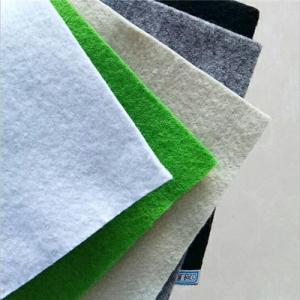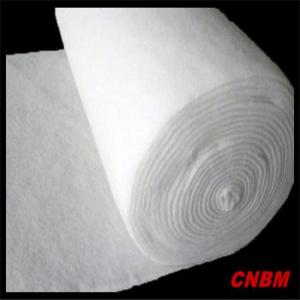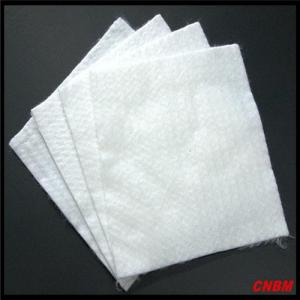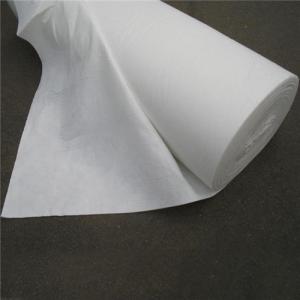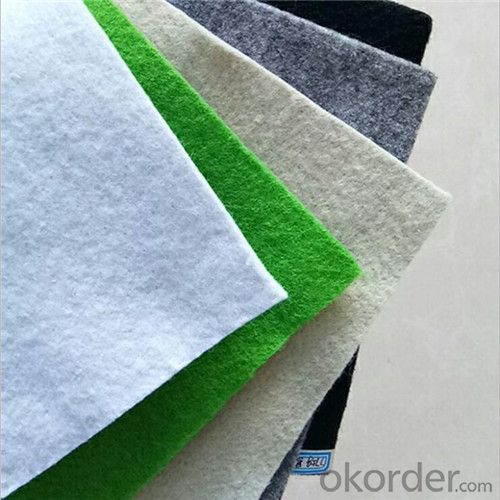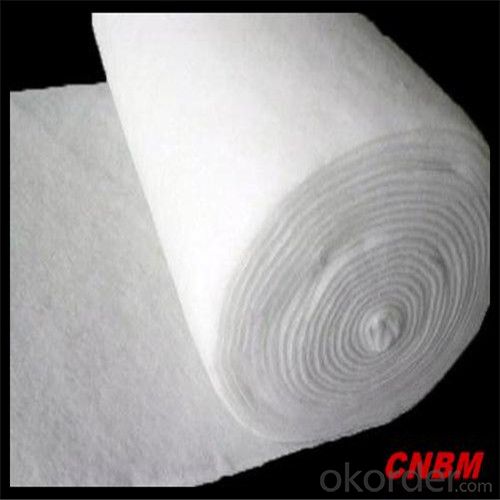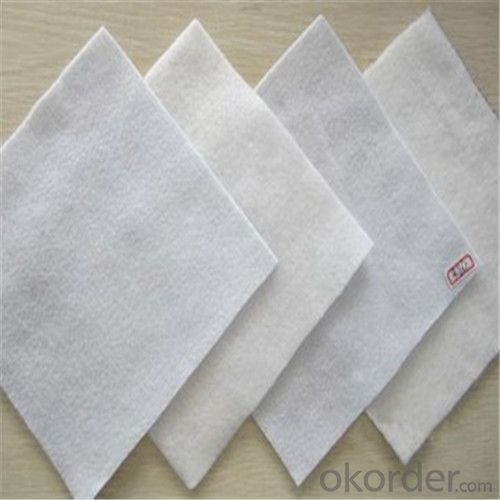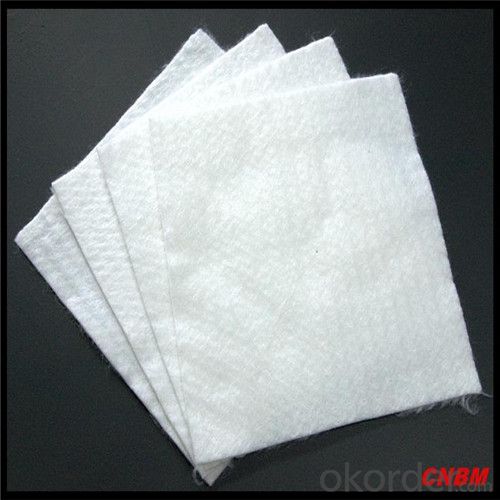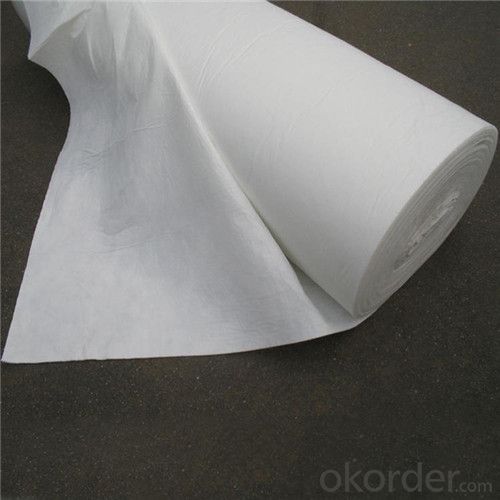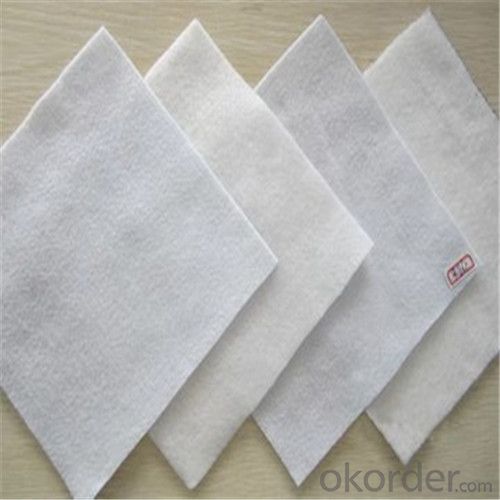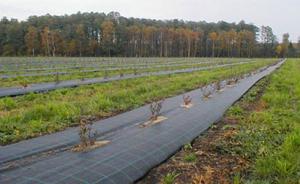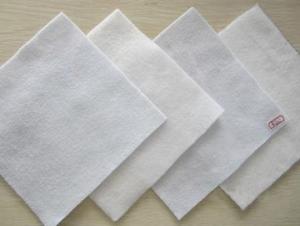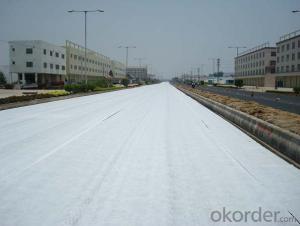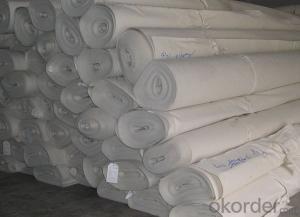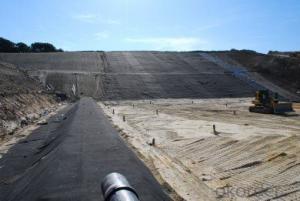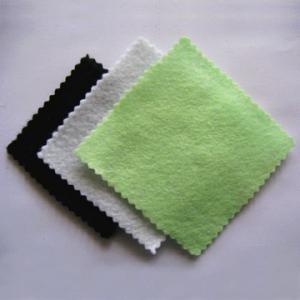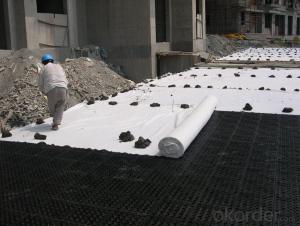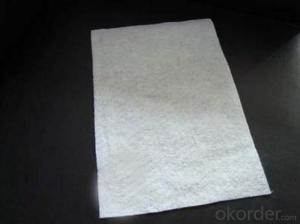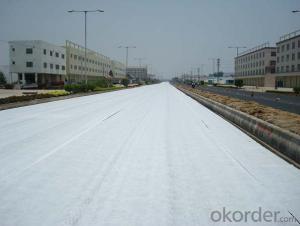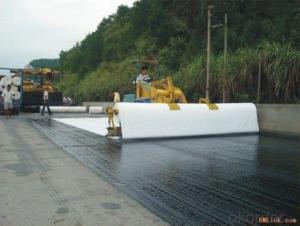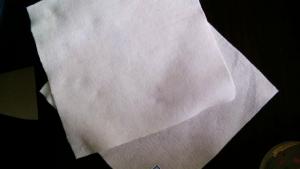Polypropylene Non-woven Geotextile or Non Woven Fabric
- Loading Port:
- China main port
- Payment Terms:
- TT or LC
- Min Order Qty:
- 2000 m²
- Supply Capability:
- 1000000 m²/month
OKorder Service Pledge
OKorder Financial Service
You Might Also Like
Specification
Polypropylene Non-woven Geotextile Function:
Effectively spreading,delivering or resolving the concentrated stress to protect the soil from the damage by external force.

Polypropylene Non-woven Geotextile Application:
The geotextile form impermeable layer inside the soil layer in conjunction with other material (primarily asphalt or plastic film)[mainly used for road,resurfacing,repairing.etc.
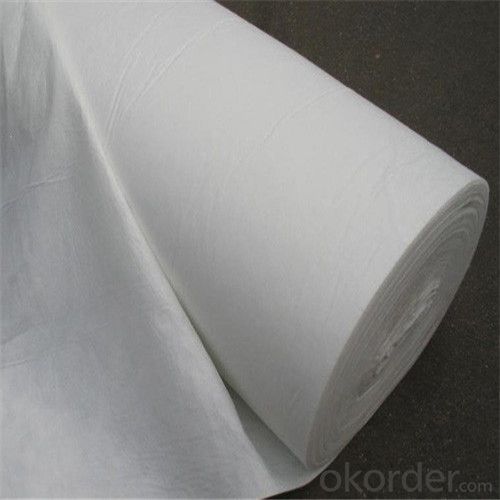
Polypropylene Non-woven Geotextile Application Features:
Can self-seal small cracks while forming watertight laps at the seams.
Provides a strong mechanical bond to poured concrete.
Proven effective in structures under continuous or intermittent hydrostatic pressure-up to 70m (231 ft).
Can be installed in virtually any weather condition, including freezing temperatures and damp conditions. Can be installed on green concrete without primers or adhesives.
Proven effective in both vertical and horizontal applications-i.e., backfilled and property-line walls.
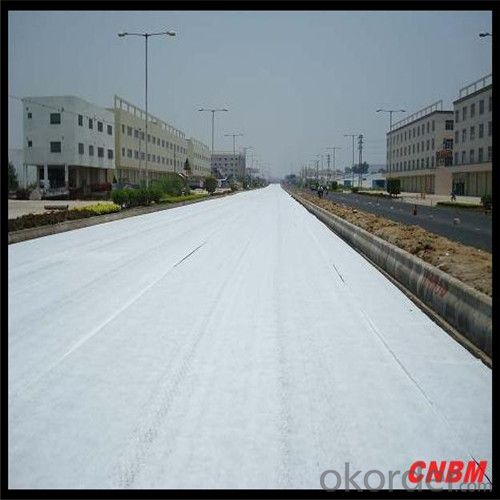
Polypropylene Non-woven Geotextile Packaging & Shipping:
Packing: Plastic Film or Woven bag;
Shipping: About 15 days after receipt the deposit
Polypropylene Non-woven Geotextile Quality Assurance:
1.On a regular basis or as per your request,we entrust national testing agencies to conduct quality inspections
2. Strictly in accordance with the ISO9001-2008 international quality system standard,we monitor and manage the whole process throughout production,quality testing,and measurement to ensure product quality
3. For quality-related construction delay or substandard construction(except for damage or losses due to customer’s responsibility or irresistible natural disasters),we have refunding,replacement,and repair services.We will respond to customers’ feedbacks on quality issues within 24 hours.
- Q: Alteration of highway seepage control geotextile is generally placed in what position
- Apply to the grassroots level of water defense, the use of embedded, covered with thickness should not be less than 30CM, soil to be solid, to avoid uneven subsidence, cracks. Lap width should be greater than 15CM.
- Q: How do geotextiles affect soil consolidation?
- Geotextiles have a positive impact on soil consolidation as they provide reinforcement and stabilization. By acting as a barrier, they prevent the mixing of different soil layers, reducing the potential for settlement and increasing the overall strength of the soil. This consolidation is achieved through the interlocking of geotextile fibers with the soil particles, enhancing the load-bearing capacity and preventing the loss of fine particles.
- Q: Sponge city sunken green land in the drilling drainage jacket how to set the amount of geotextile
- Need plastic blind ditch, complete specifications, collar Xiang new materials for your answer
- Q: Today someone told me about a boyfriend, said to be geotextile. I wonder, geotextile cloth is what cloth? Is there there? Why is it used More
- Geotextile geotextile, also known as geotextile, it is made of synthetic fibers through the needle or woven from the permeability of geosynthetics. Finished cloth for the cloth, the general width of 4-6 meters, the length of 50-100 meters. Geotextile is divided into a woven geotextile and non-woven geotextile. Geotextile has excellent filtration, isolation, reinforcement protection, high tensile strength, good permeability, high temperature, anti-freeze, anti-aging, corrosion resistance. Divided into: non-woven geotextile, a textile geotextile (reinforced geotextile), warp knitted geotextile with demand can contact: Fang Lingyan Tel:
- Q: How do geotextiles help with filtration in wastewater treatment systems?
- Geotextiles serve as a crucial component in wastewater treatment systems by providing effective filtration. These specialized fabrics have excellent permeability, allowing water to pass through while retaining solid particles and contaminants. Geotextiles act as a physical barrier, preventing the clogging of drainage systems and ensuring efficient flow of water through the treatment process. They also assist in the separation and retention of suspended solids, which aids in the removal of pollutants, sediments, and organic matter from wastewater. Overall, geotextiles enhance the filtration capacity of wastewater treatment systems, leading to improved water quality and environmental sustainability.
- Q: What are the design considerations for geotextile applications?
- Some design considerations for geotextile applications include the type and weight of the geotextile material, the strength and durability requirements, the expected level of permeability, the ability to withstand environmental conditions such as UV exposure or chemical exposure, and the compatibility with other materials used in the project. Additionally, factors such as installation methods, load distribution, and long-term maintenance should also be taken into account during the design process.
- Q: Are geotextiles resistant to hydrocarbons?
- Yes, geotextiles are generally resistant to hydrocarbons.
- Q: Geomembrane upstream protective layer with what material? The Why can not you use clay?
- With geotextile to do protective layer, because the geotextile and geomembrane as with acid and alkali, is the characteristics of corrosion, the useful life of more than 50 years can better protect the geomembrane. Clay and its performance is far from the comparison, so the use of geotextile hides to avoid waste Zhuan belly over the sand to make the upper reaches of the protective layer. Inquire about Yinjing Li
- Q: Do geotextiles affect soil pH levels?
- No, geotextiles do not affect soil pH levels.
- Q: What are the different geotextile installation techniques in erosion control?
- There are several geotextile installation techniques used in erosion control, including trench installation, slope installation, and blanket installation. Trench installation involves placing geotextile fabric in a trench along the slope to prevent soil erosion. Slope installation involves placing geotextile fabric on the surface of a slope to stabilize the soil and prevent erosion. Blanket installation involves placing geotextile fabric over a large area, such as a construction site or a riverbank, to provide erosion control and sediment filtration. Each technique has its own advantages and is chosen based on the specific erosion control needs of the site.
Send your message to us
Polypropylene Non-woven Geotextile or Non Woven Fabric
- Loading Port:
- China main port
- Payment Terms:
- TT or LC
- Min Order Qty:
- 2000 m²
- Supply Capability:
- 1000000 m²/month
OKorder Service Pledge
OKorder Financial Service
Similar products
Hot products
Hot Searches
Related keywords
